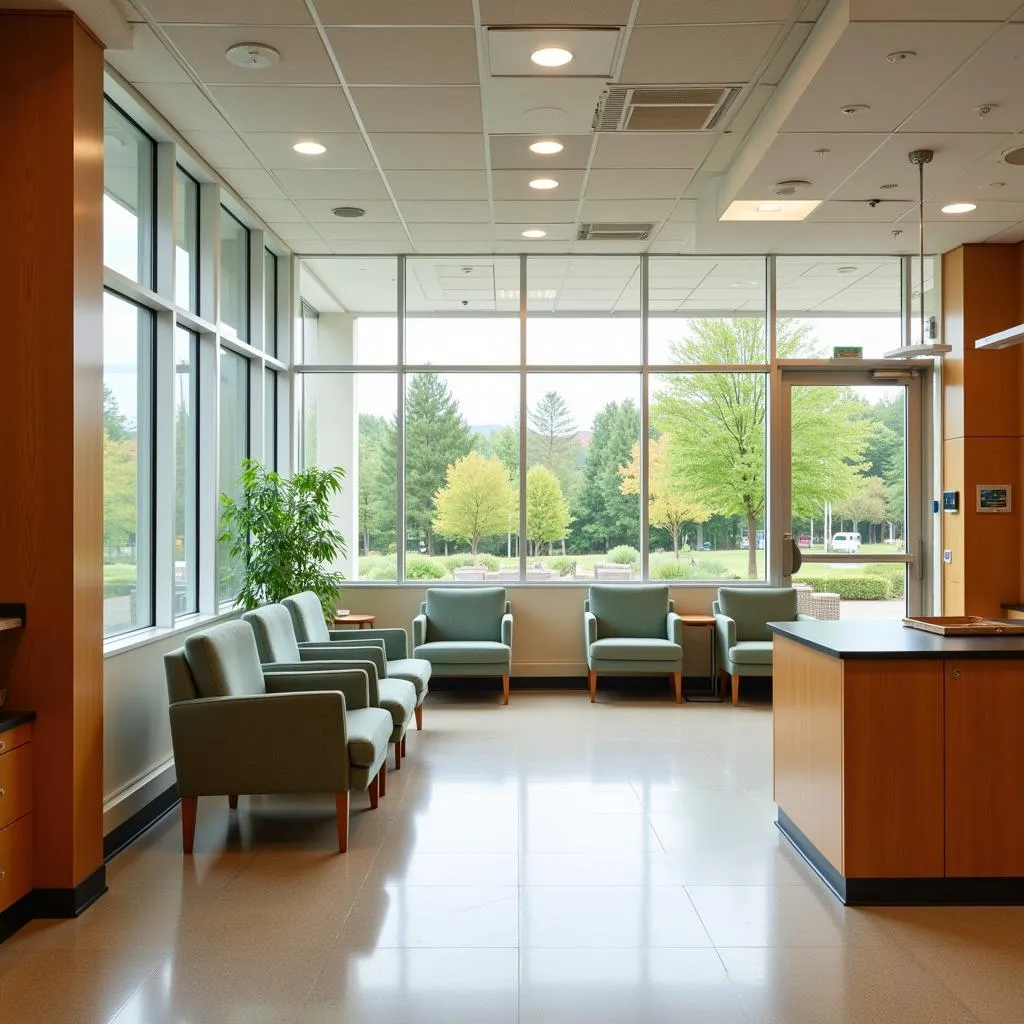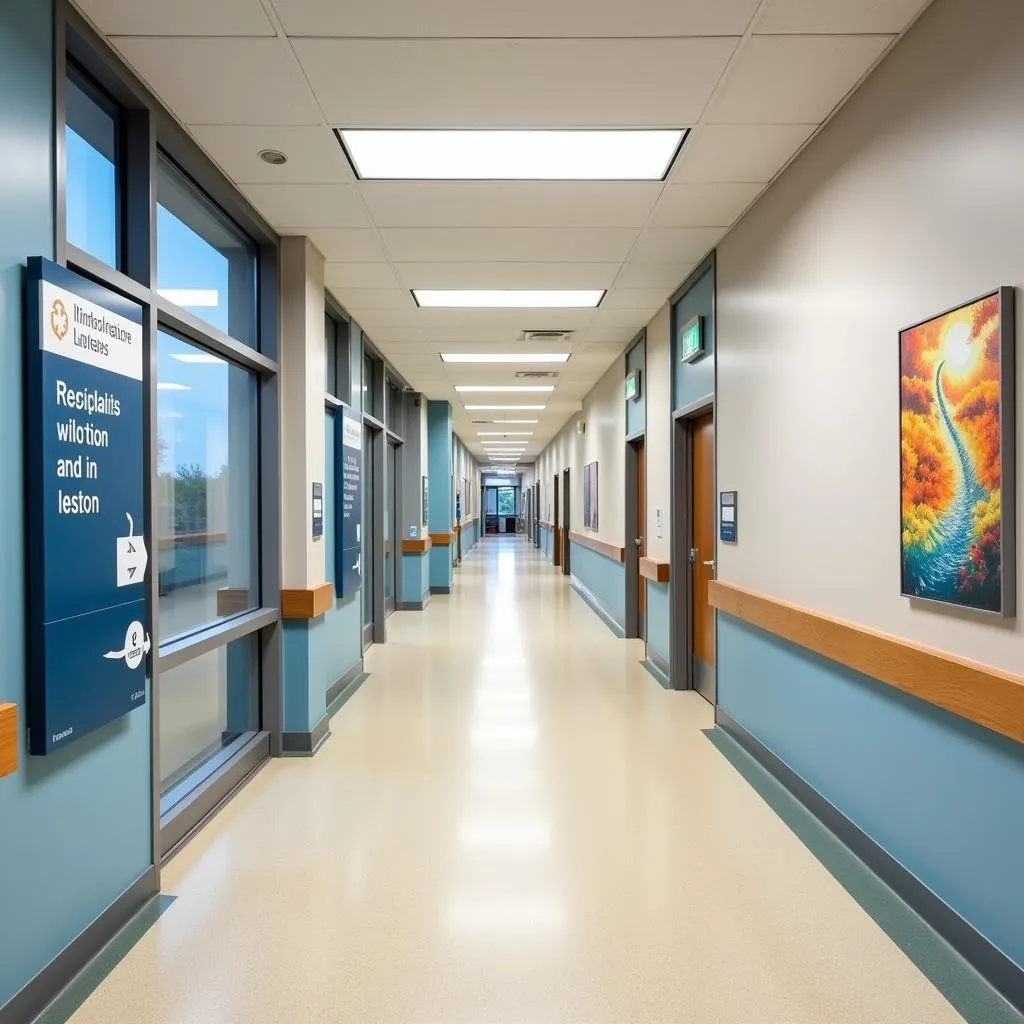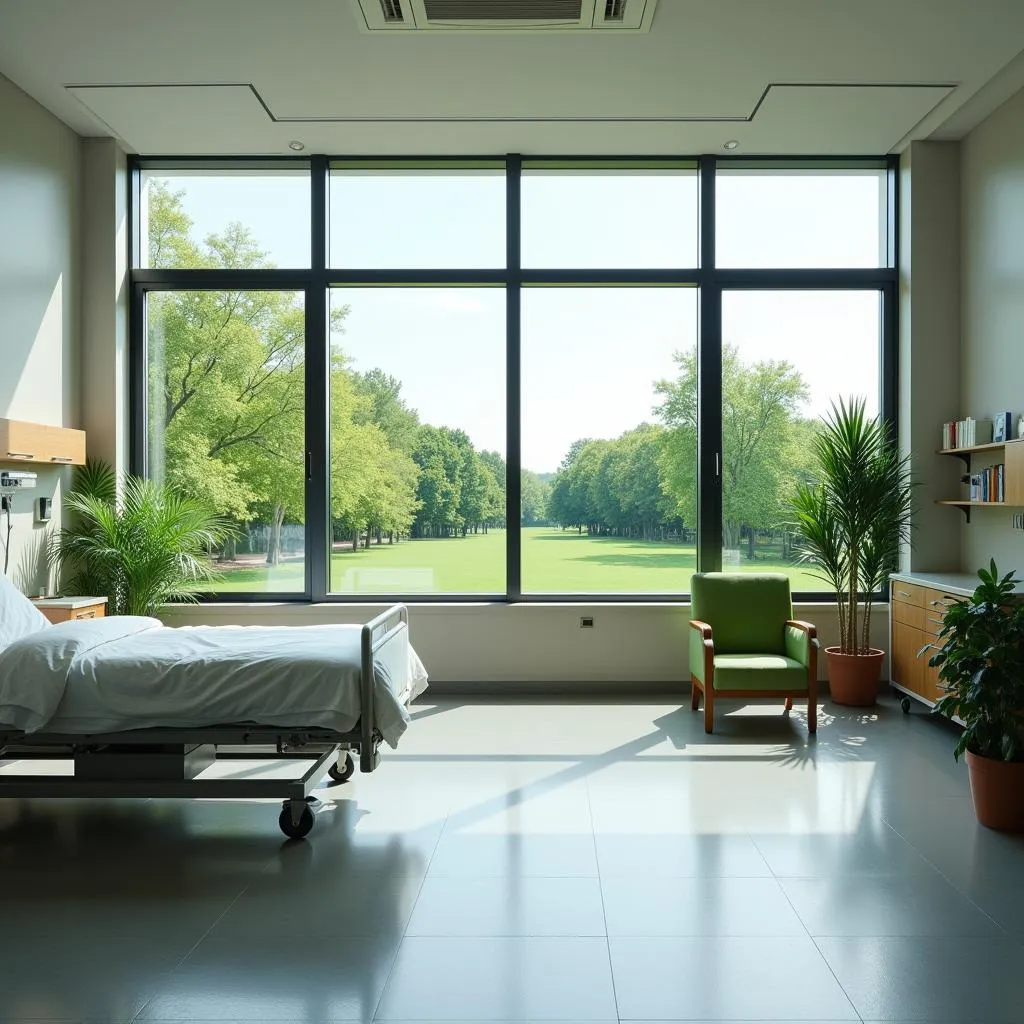Hospital Interior Decoration goes far beyond mere aesthetics; it plays a crucial role in influencing patient experience, staff well-being, and overall operational efficiency. By thoughtfully curating the interior environment, hospitals can create spaces that promote healing, reduce stress, and inspire confidence.
The Impact of Hospital Interior Decoration
Effective hospital interior design takes into consideration the psychological and emotional needs of patients, visitors, and staff. Studies have shown that well-designed healthcare spaces can contribute to:
- Reduced stress and anxiety: Calming colors, natural light, and comfortable furniture can help alleviate stress and anxiety in patients, families, and staff.
- Improved patient outcomes: A healing environment can positively impact patient recovery times, reduce the need for pain medication, and improve overall satisfaction.
- Enhanced staff morale and productivity: A well-designed workspace can boost staff morale, increase productivity, and reduce errors.
- Strengthened brand identity: A cohesive and welcoming interior design can reinforce a hospital’s brand image and values.
 Modern hospital waiting area with comfortable seating and natural light.
Modern hospital waiting area with comfortable seating and natural light.
Key Considerations for Hospital Interior Decoration
Creating a successful hospital interior design requires a holistic approach that addresses the unique needs of different areas within the facility. Here are some key considerations:
1. Patient Rooms: Balancing Functionality and Comfort
- Prioritize comfort and accessibility: Patient rooms should be designed with comfort and accessibility in mind. Adjustable beds, ergonomic seating for visitors, and easy-to-reach controls can significantly enhance patient experience.
- Incorporate natural elements: Natural light, views of nature, and the use of natural materials like wood and stone can create a sense of tranquility and promote healing.
- Personalization and control: Allow patients some control over their environment, such as adjustable lighting and temperature controls, to foster a sense of autonomy.
2. Waiting Areas: Creating a Welcoming First Impression
- Promote a calming atmosphere: Use soothing colors, comfortable seating, and soft lighting to create a welcoming and relaxing atmosphere.
- Incorporate distractions: Provide amenities such as TVs, magazines, and Wi-Fi to help distract patients and visitors from the stress of waiting.
- Ensure clear wayfinding: Clear signage and intuitive layouts can reduce confusion and enhance the overall experience.
 Bright and spacious hospital corridor with clear wayfinding signage and artwork.
Bright and spacious hospital corridor with clear wayfinding signage and artwork.
3. Treatment Areas: Balancing Functionality and Sensitivity
- Prioritize hygiene and cleanliness: Treatment areas should be designed with hygiene and cleanliness as top priorities. Easy-to-clean surfaces, adequate ventilation, and designated handwashing stations are crucial.
- Consider patient privacy: Provide private spaces for consultations and treatments to ensure patient comfort and dignity.
- Minimize noise and distractions: Use sound-absorbing materials and minimize visual clutter to create a calmer and more focused environment.
4. Staff Areas: Promoting Well-being and Efficiency
- Create functional and comfortable workspaces: Ergonomic furniture, adjustable lighting, and access to natural light are essential for staff well-being and productivity.
- Encourage collaboration and communication: Design staff areas that foster collaboration and communication, with designated spaces for meetings and breaks.
- Show appreciation: Dedicate space for staff recognition, appreciation boards, and artwork that celebrates their work and dedication.
Trends in Hospital Interior Decoration
The field of hospital interior design is constantly evolving, with new trends emerging to meet the changing needs of patients and healthcare providers. Some notable trends include:
- Biophilic Design: Incorporating elements of nature, such as natural light, greenery, and water features, to promote healing and well-being.
- Technology Integration: Integrating technology seamlessly into the design to improve patient care, enhance communication, and increase efficiency.
- Sustainability: Utilizing eco-friendly materials, energy-efficient lighting, and sustainable design practices to create a healthier and more environmentally responsible space.
- Home-like Environments: Creating a more home-like and less clinical feel in patient rooms and common areas to promote comfort and relaxation.
 Modern hospital room featuring biophilic design elements with large windows and indoor plants.
Modern hospital room featuring biophilic design elements with large windows and indoor plants.
Conclusion
Hospital interior decoration plays a vital role in creating a healing, welcoming, and efficient healthcare environment. By thoughtfully considering the needs of patients, visitors, and staff, hospitals can create spaces that promote well-being, reduce stress, and enhance the overall experience. As the healthcare industry continues to evolve, so too will the field of hospital interior design, with innovative and human-centered approaches shaping the future of healing environments.